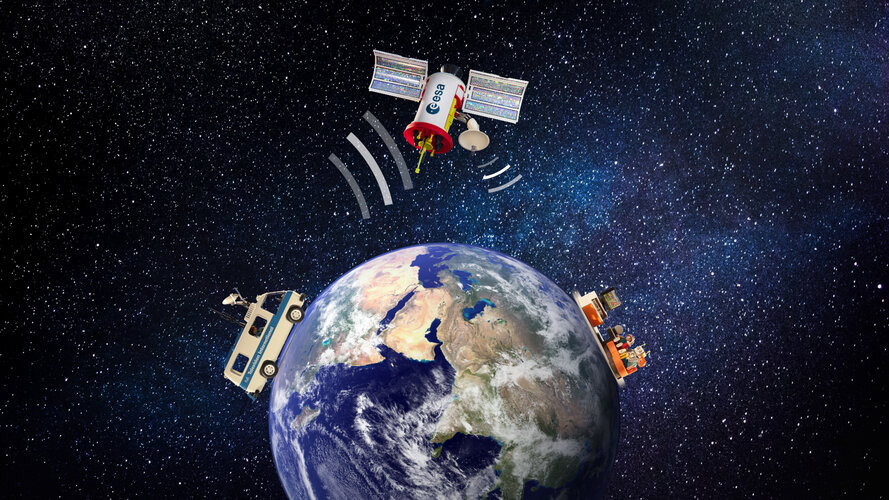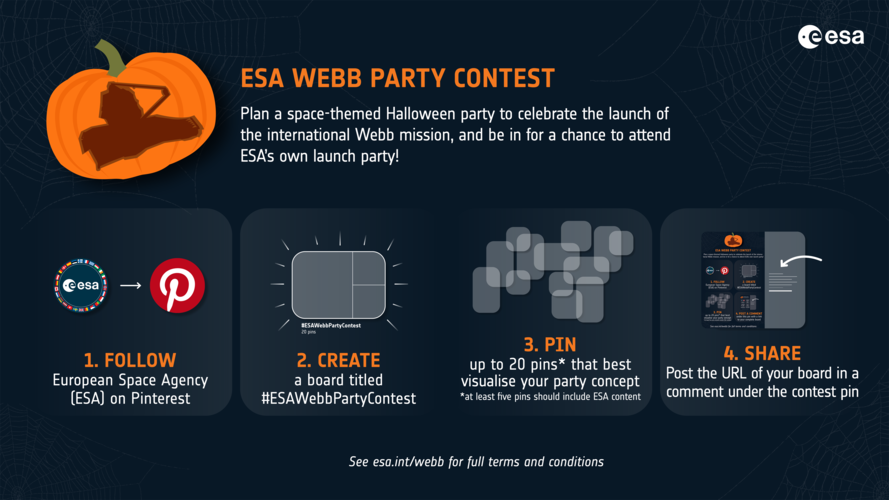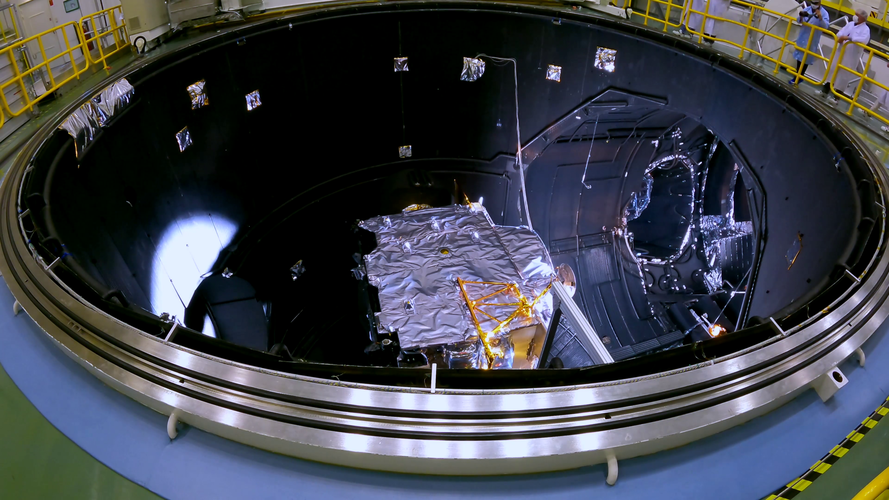
Copernical Team
Russia to launch new International Space Station module

The long-delayed Russian module for the International Space Station is set to be finally launched this month, but the date has been pushed back several days, the head of the country's space corporation said Thursday.
Roscosmos director Dmitry Rogozin said on Twitter that the Nauka (Science) module is now scheduled to be launched from the Russian launch facility in Baikonur, Kazakhstan on July 21. The following two days could serve as reserve dates for the launch.
Russian space officials had earlier said that the launch previously set for July 15 was postponed because of the need to fix some unspecified flaws.
The launch of Nauka, also called Multipurpose Laboratory Module, has been repeatedly delayed because of technical problems.
It was initially scheduled to go up in 2007. In 2013, experts found contamination in its fuel system, resulting in a long and costly replacement. Other Nauka systems also underwent modernization or repairs.
The 20-metric-ton module is set to be put to orbit by a Proton-M booster rocket. It's intended to provide Russian astronauts onboard the space outpost with their own room and capacity for lab research.
NASA Selects Moog to Power and Control VIPER Lunar Rover
 Moog Inc. report sthat the company's space products have been selected for an upcoming NASA mission to explore the Moon's South Pole. The Volatiles Investigating Polar Exploration Rover, or VIPER, is NASA's first mobile robotic rover mission to the Moon.
VIPER will rely on Moog's radiation-hardened avionics technology to control the rover during its 100-day mission. The Integrated Avionics
Moog Inc. report sthat the company's space products have been selected for an upcoming NASA mission to explore the Moon's South Pole. The Volatiles Investigating Polar Exploration Rover, or VIPER, is NASA's first mobile robotic rover mission to the Moon.
VIPER will rely on Moog's radiation-hardened avionics technology to control the rover during its 100-day mission. The Integrated Avionics How does satellite communication work? ROBert explains all!

Trying to explain satellite communication to children is no easy task, so why not let robot host ROBert help? In the third of the ROBert Knows videos created by ESA and PLAYMOBIL, ROBert examines how satellite communication works with a little help from our own expert Director of TIA, Elodie Viau.
How to enter the ESA Webb Party Contest

Create a space-themed Halloween party concept on Pinterest to celebrate the launch of the international Webb mission, and be in with a chance of attending ESA's own VIP launch event!
Sea to stars: first Arab woman astronaut in training

The UAE's Nora al-Matrooshi is the first Arab woman to start training to be an astronaut, one of two Emiratis picked from thousands of applicants as the Gulf nation looks to the stars.
The 28-year-old mechanical engineer from Sharjah—one of the seven emirates that make up the UAE—has dreamt about space since she was a girl, learning about planets and stars at school.
And while there are no space missions scheduled, she hopes to have the opportunity to one day visit space, continuing the tradition of exploration begun by her sailor ancestors.
Image: The heart of a lunar sensor

The heart of the Exospheric Mass Spectrometer (EMS) is visible in this image of the key sensor that will study the abundance of lunar water and water ice for upcoming missions to the Moon.
This spectrometer is being delivered to NASA today as part of the PITMS instrument for its launch to the Moon later this year.
EMS is based on an 'ion trap', an ingenious detector device that allows researchers to identify and quantify sample atoms and molecules in a gas and allows to establish a corresponding mass spectrum. Scientists at The Open University and RAL Space are developing EMS under an ESA contract.
Lunar molecules entering the sensor are bombarded by electrons emitted by a heated wire to create ions. The resulting ions are stored within an electric field formed by a set of precisely-shaped electrodes. The ions are then released from this 'trap' in order of increasing mass/charge ratio into the detector that identifies and quantifies their chemical makeup.
This will allow the instrument to measure water and other molecules in the very thin atmosphere of the Moon throughout the lunar day to study a lunar 'water cycle' concept.
Small amount of lithium production in classical nova

A new study of lithium production in a classical nova found a production rate of only a couple of percent that seen in other examples. This shows that there is a large diversity within classical novae and implies that nova explosions alone cannot explain the amount of lithium seen in the current universe.
The Making of JUICE - Episode 5
 Video:
00:05:08
Video:
00:05:08
The ESA Jupiter Icy Moons Explorer (Juice) team has been working very hard to prepare the spacecraft for the first test in the one-year long environmental test campaign. This is the so-called Thermal Balance Thermal Vacuum (TBTV) test.
Juice is in the Large Space Simulator (LSS), a unique facility in Europe (run by the European Test Center, at ESA/ESTEC in the Netherlands) that can simulate the vacuum and cold and hot temperature conditions in space, and also the Sun itself!
The TBTV started on 17 June with the closure of the LSS and the "pumping-down", meaning the removal of
New satellite data techniques reveal coastal sea-level rise

For the hundreds of millions of people living in coastal regions around the world, rising seas driven by climate change pose a direct threat. In order for authorities to plan appropriate protection strategies, accurate information on sea-level rise close to the coast is imperative. For various reasons, these measurements are difficult to get from satellites. However, new ESA-funded research demonstrates how a specific way of processing satellite altimetry data now makes it possible to determine sea-level change in coastal areas with millimetre per year accuracy, and even if the sea is covered by ice.

 Image:
A touch of sun
Image:
A touch of sun